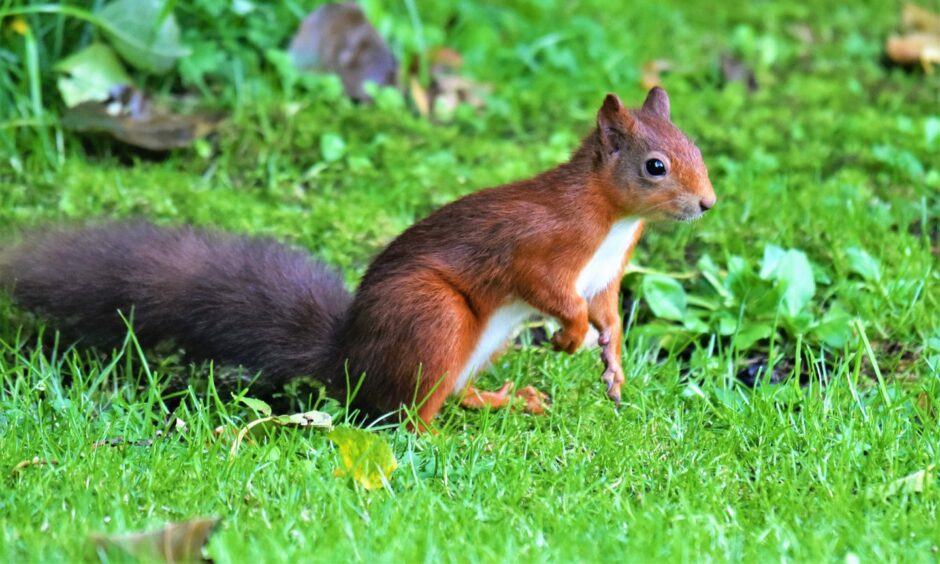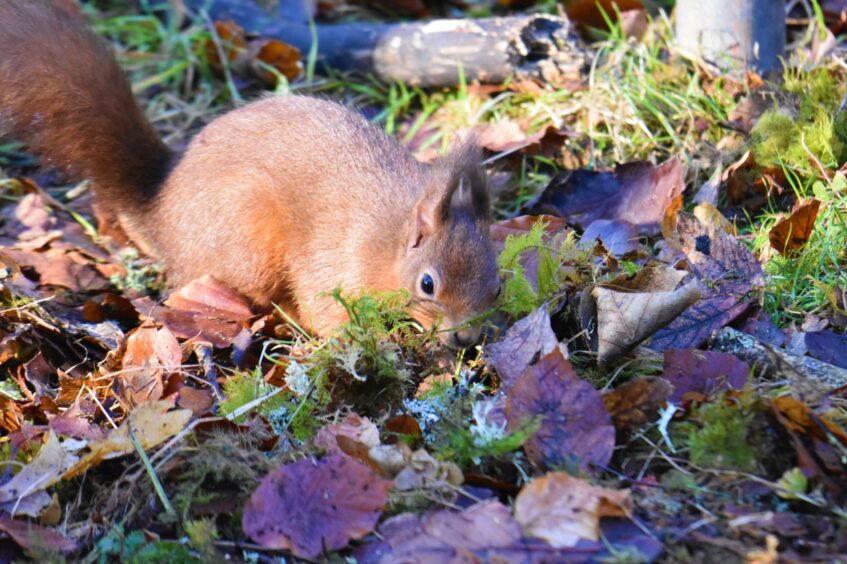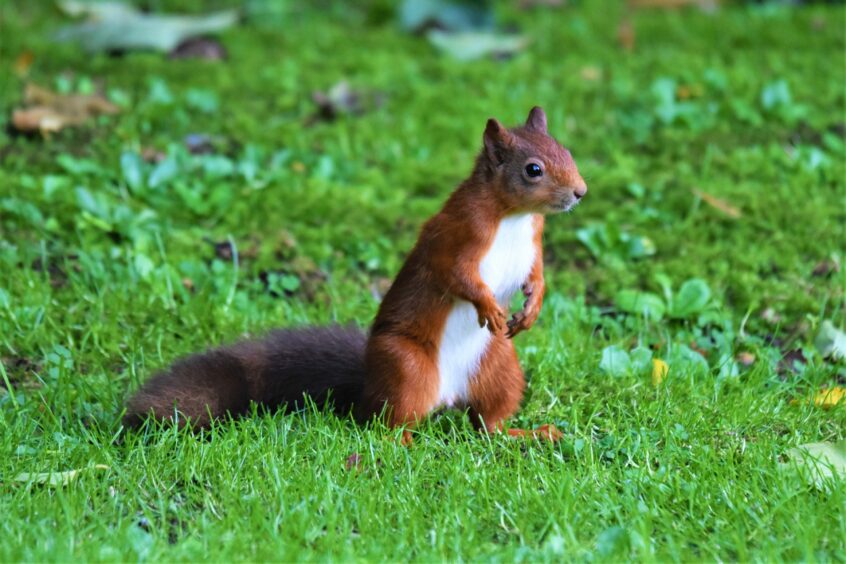I discover an oak seedling in the corner of the garden, and then several more, each one crafted in perfect symmetry, with a cluster of little green crinkle-edged leaves held aloft upon a slender stem.
How did they get there, for there are no oak trees adjacent to my garden?
I pondered for a moment, and then the answer sprung upon me – red squirrels!
Memories quickly flooded back of watching these endearing creatures scampering across the garden the previous autumn.
Often, I would catch reds burying food items into the garden lawn, which I presumed were peanuts from the bird feeder.
However, it now appears acorns were also being stored, collected from a nearby wood.
Once each little nugget of treasure is nestled within its newly dug hole, the squirrel patters the soil carefully back into place with its front paws.
Clever ploy
For the squirrel, this was a clever ploy to store acorns and seeds for retrieval during the dark days of winter.
Of course, red squirrels are not that smart because they can’t possibly remember where all their underground food caches lie, thus the following spring tree saplings emerge from the soil.
It is nature working at its best, almost as if guided by some force from above, because the squirrels are helping to secure the future of the woodland in which they live by carefully planting tree seeds.
The oaks benefit, as do the squirrels and host of other creatures that depend upon woodland for their survival.
The importance of the oak to our environment is immense, a provider of life that creates abundant biodiversity through a domino effect of natural inter-dependence.
The trunk and branches are characterised by numerous cracks and fissures, providing the perfect place for flora and fauna to gain a foothold and thrive.
Oaks are very long-lived, and an individual tree supports a multitude of different types of insects and other invertebrates, which themselves are fed upon by birds, bats, shrews, and other creatures, not to mention the acorns that squirrels, jays, and mice adore.
Nest holes
Add the flora, fungi, and other lifeforms, then the oak has the potential to support over two thousand different species.
Over time, branches will get torn off from the trees in gales and the resultant holes and cracks make wonderful places for birds to nest.
These fallen branches will also slowly decay on the woodland floor, providing another productive environment for a whole host of invertebrates and fungi to live.
The leaves of oak also rot easily, forming a rich leaf mould on the woodland floor.
The oak is a remarkable tree, one to revere and treasure – which in this instance saddened me, for the fringes of my small garden was not a place where these squirrel-planted oak saplings could ever thrive.
So, I gently dug each one up and replanted them carefully in the woodland near my house, hopeful that one day in the future, their wondrous natural powers will ensure the woodland continues to be a diverse and vibrant place.












